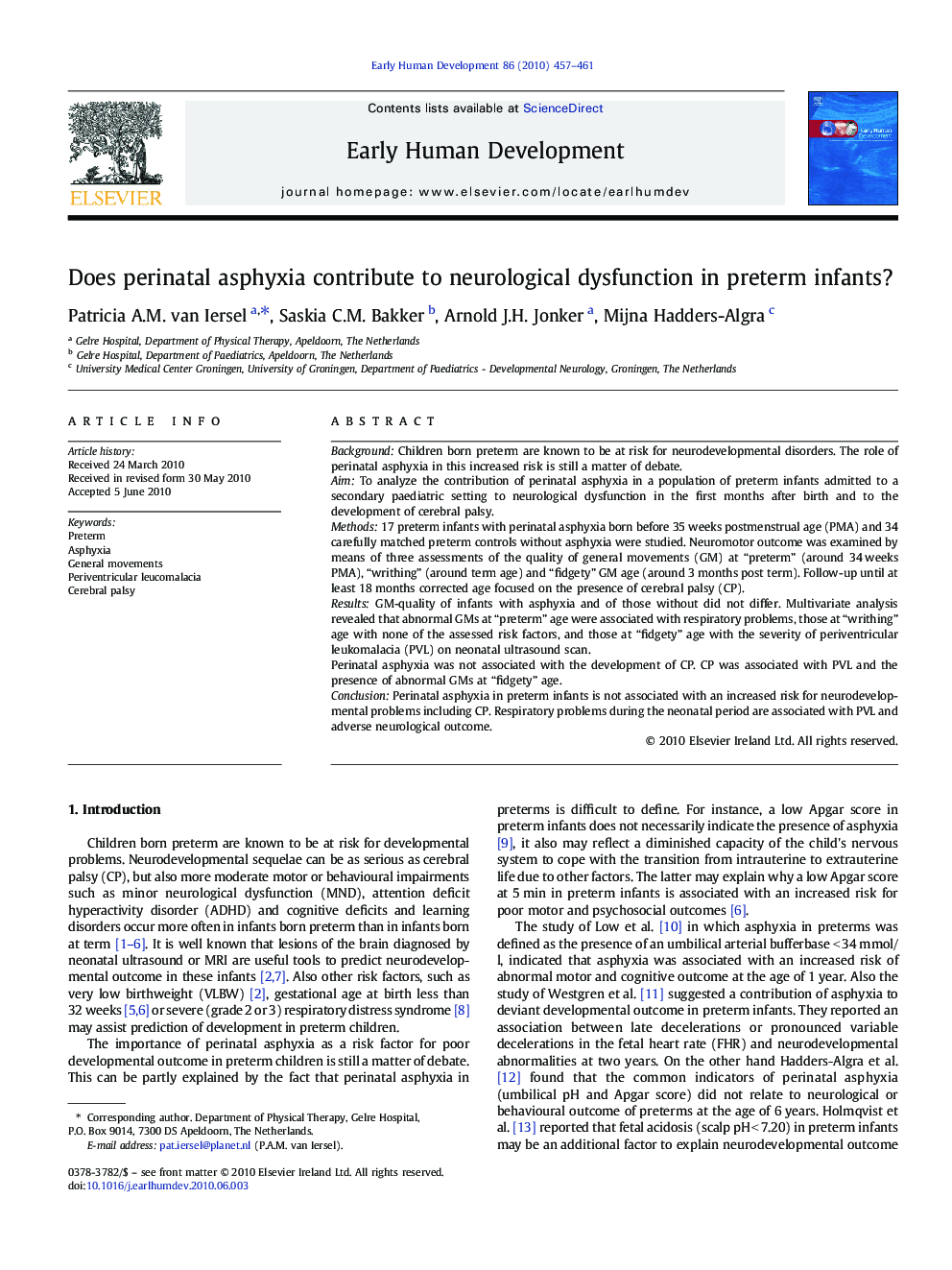| Article ID | Journal | Published Year | Pages | File Type |
|---|---|---|---|---|
| 6172371 | Early Human Development | 2010 | 5 Pages |
BackgroundChildren born preterm are known to be at risk for neurodevelopmental disorders. The role of perinatal asphyxia in this increased risk is still a matter of debate.AimTo analyze the contribution of perinatal asphyxia in a population of preterm infants admitted to a secondary paediatric setting to neurological dysfunction in the first months after birth and to the development of cerebral palsy.Methods17 preterm infants with perinatal asphyxia born before 35Â weeks postmenstrual age (PMA) and 34 carefully matched preterm controls without asphyxia were studied. Neuromotor outcome was examined by means of three assessments of the quality of general movements (GM) at “preterm” (around 34Â weeks PMA), “writhing” (around term age) and “fidgety” GM age (around 3Â months post term). Follow-up until at least 18Â months corrected age focused on the presence of cerebral palsy (CP).ResultsGM-quality of infants with asphyxia and of those without did not differ. Multivariate analysis revealed that abnormal GMs at “preterm” age were associated with respiratory problems, those at “writhing” age with none of the assessed risk factors, and those at “fidgety” age with the severity of periventricular leukomalacia (PVL) on neonatal ultrasound scan.Perinatal asphyxia was not associated with the development of CP. CP was associated with PVL and the presence of abnormal GMs at “fidgety” age.ConclusionPerinatal asphyxia in preterm infants is not associated with an increased risk for neurodevelopmental problems including CP. Respiratory problems during the neonatal period are associated with PVL and adverse neurological outcome.
